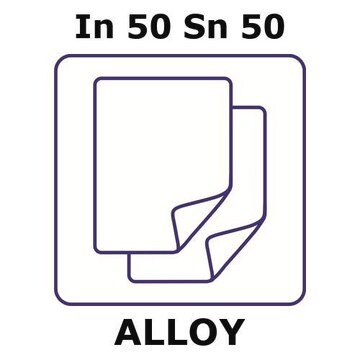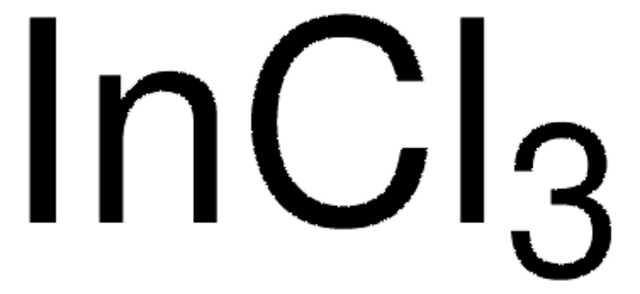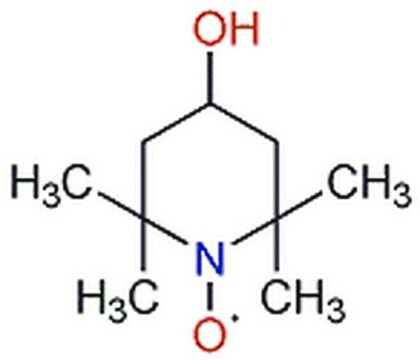264040
Indium
foil, thickness 0.25 mm, 99.995% trace metals basis
Synonym(s):
Indium element
Sign Into View Organizational & Contract Pricing
All Photos(1)
About This Item
Empirical Formula (Hill Notation):
In
CAS Number:
Molecular Weight:
114.82
EC Number:
MDL number:
UNSPSC Code:
12141719
PubChem Substance ID:
NACRES:
NA.23
Recommended Products
vapor pressure
<0.01 mmHg ( 25 °C)
Quality Level
assay
99.995% trace metals basis
form
foil
resistivity
8.37 μΩ-cm
thickness
0.25 mm
mp
156.6 °C (lit.)
density
7.3 g/mL at 25 °C (lit.)
SMILES string
[In]
InChI
1S/In
InChI key
APFVFJFRJDLVQX-UHFFFAOYSA-N
Looking for similar products? Visit Product Comparison Guide
Quantity
4.6 g = 50 × 50 mm; 18.4 g = 100 × 100 mm
signalword
Danger
hcodes
Hazard Classifications
STOT RE 1 Inhalation
target_organs
Lungs
Storage Class
6.1C - Combustible acute toxic Cat.3 / toxic compounds or compounds which causing chronic effects
wgk_germany
WGK 1
flash_point_f
Not applicable
flash_point_c
Not applicable
ppe
dust mask type N95 (US), Eyeshields, Gloves
Choose from one of the most recent versions:
Already Own This Product?
Find documentation for the products that you have recently purchased in the Document Library.
Ching-Hwa Ho et al.
ACS applied materials & interfaces, 5(6), 2269-2277 (2013-03-05)
The surface formation oxide assists of visible to ultraviolet photoelectric conversion in α-In2Se3 hexagonal microplates has been explored. Hexagonal α-In2Se3 microplates with the sizes of 10s to 100s of micrometers were synthesized and prepared by the chemical vapor transport method
G W Shu et al.
Physical chemistry chemical physics : PCCP, 15(10), 3618-3622 (2013-02-06)
Nonradiative energy transfer from an InGaN quantum well to Ag nanoparticles is unambiguously demonstrated by the time-resolved photoluminescence. The distance dependence of the energy transfer rate is found to be proportional to 1/d(3), in good agreement with the prediction of
Juan Zhou et al.
Chemical communications (Cambridge, England), 49(22), 2237-2239 (2013-02-12)
A reduced graphene oxide (RGO)-ZnIn(2)S(4) nanosheet composite was successfully synthesized via an in situ controlled growth process. The as-obtained RGO-ZnIn(2)S(4) composite showed excellent visible light H(2) production activity in the absence of noble metal cocatalysts.
Annick Bay et al.
Optics express, 21 Suppl 1, A179-A189 (2013-02-15)
In this paper the design, fabrication and characterization of a bioinspired overlayer deposited on a GaN LED is described. The purpose of this overlayer is to improve light extraction into air from the diode's high refractive-index active material. The layer
Han-Youl Ryu et al.
Optics express, 21 Suppl 1, A190-A200 (2013-02-15)
We investigate the dependence of various efficiencies in GaN-based vertical blue light-emitting diode (LED) structures on the thickness and doping concentration of the n-GaN layer by using numerical simulations. The electrical efficiency (EE) and the internal quantum efficiency (IQE) are
Our team of scientists has experience in all areas of research including Life Science, Material Science, Chemical Synthesis, Chromatography, Analytical and many others.
Contact Technical Service



